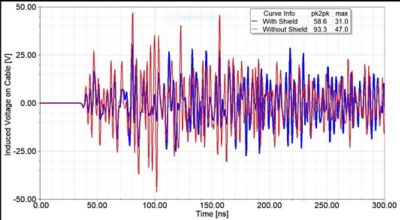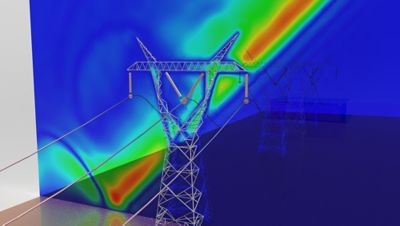-
-
Accédez au logiciel étudiant gratuit
Ansys donne les moyens à la prochaine génération d'ingénieurs
Les étudiants ont accès gratuitement à un logiciel de simulation de classe mondiale.
-
Connectez-vous avec Ansys maintenant !
Concevez votre avenir
Connectez-vous à Ansys pour découvrir comment la simulation peut alimenter votre prochaine percée.
Pays et régions
Espace client
Support
Communautés partenaires
Contacter le service commercial
Pour les États-Unis et le Canada
S'inscrire
Essais gratuits
Produits & Services
Apprendre
À propos d'Ansys
Back
Produits & Services
Back
Apprendre
Ansys donne les moyens à la prochaine génération d'ingénieurs
Les étudiants ont accès gratuitement à un logiciel de simulation de classe mondiale.
Back
À propos d'Ansys
Concevez votre avenir
Connectez-vous à Ansys pour découvrir comment la simulation peut alimenter votre prochaine percée.
Espace client
Support
Communautés partenaires
Contacter le service commercial
Pour les États-Unis et le Canada
S'inscrire
Essais gratuits
ANSYS BLOG
April 2, 2019
EMP Simulations Will Make the Latest Executive Order Affordable
The latest administration has recently released an executive order that coordinates the United States’ ability to protect itself from the effects of electromagnetic pulses (EMPs).
An EMP is a surge of electromagnetic interference (EMI) that subjects electrical components to exceptionally high electromagnetic fields. These fields induce currents and voltages that damage electronics.
EMP simulation, made using ANSYS HFSS, shows how the electromagnetic field would travel through a city scape.
The administration fears that without EMP protections in place, EMPs could permanently damage electronic hardware in a large geographic area — like a city. This disruption could last until the affected equipment is replaced. As a result, an EMP could be a significant threat to the security, economy and citizens of the U.S.
Ansys HFSS EMP simulations are the safest and most efficient way for the federal government to enact the executive order — without risking expensive equipment. They are a fast and affordable way to develop technology, equipment and protocols that predict, respond, recover and prevent the potentially devastating effects of EMPs.
How do EMPs Affect Electronics?
“EMP effects are similar to a lightning strike, but they affect a much larger area,” says Juliano Mologni, senior product manager and EMI specialist at Ansys.
Simulation shows how an EMP affects high voltage transmission towers.
EMPs can occur naturally during a super solar storm. This happened in 1989 in Quebec, Canada, when a solar storm knocked out Hydro-Quebec’s power grid. A solar storm also caused the Carrington Event of 1859, which set telegraphs ablaze.
EMPs can also be manufactured by setting off a nuclear explosion in the atmosphere. For example, during a 1962 U.S. high-altitude test, a blast of 400 km (250 miles) had an unintended result over 1400 km (870 miles) away. It caused an EMP that knocked out Hawaiian street lights, circuit breakers, telecommunications and more. The blast even affected satellites.
Are EMP effects an Engineering Concern?
The best way to determine if these are a concern is to determine the odds of an EMP occurring.
Simulation shows how an EMP effects an airplane.
Nuclear deterrence remains the best way to prevent nuclear and EMP strikes. Even if EMPs knock out power across the states, nuclear submarines peppered around the world can respond because they will not be affected by mainland attacks. Therefore, the hope is that mass assured destruction (MAD) will prevent manufactured EMP attacks against all nations.
As for naturally occurring EMPs, these are much more likely. Estimates from NASA place the chances of an EMP hitting the earth at 10 to 12 percent per decade. So, it’s less a question of if an EMP will hit and more a question of when an EMP will hit. Therefore, EMP effects should be an engineering concern.
According to Mark Ravenstahl, technical director of strategic partnerships and business at Ansys, “America should be concerned about what happens when an EMP hits an electrical grid. More research should be done and HFSS can help provide this research.”
He adds: “HFSS empowers engineers to come up with better design practices to protect against EMP effects. If we start to build buildings with the shielding of an MRI room, we won’t have wireless communication. So, it’s a line we have to walk.”
Engineers can use EMP Simulations to Protect Electronics
Mologni proposed two potential solutions to the EMP problem. The first is shielding and the second is the use of lightning-rated surge protection devices such as metal oxide varistors.
Comparing the induced current caused by an EMP hitting an airplane with and without shielding. The maximum voltage experienced by the airplane equipment was reduced by 34 percent.
Comparing the induced current caused by an EMP hitting an airplane with and without shielding. The maximum voltage experienced by the airplane equipment was reduced by 34 percent.
“Shielding is a viable solution, but it is complex and costly,” says Mologni. “You have to ensure the shielding is frequency-selective so certain signals, like wireless communication, pass through the barrier.”
The second approach is to redirect the EMP signal away from the electrical components. This approach is similar to how a lightning rod redirects a bolt into the ground.
“You can install surge protective devices on both ends of the conduction path,” Mologni explains. “When there is a short burst of electromagnetic energy, like you would see from an EMP, the surge protective devices will send the signal to the ground. Your device will likely lose digital signal information during the event, and it might need a reboot due to software errors, but it wouldn’t suffer permanent hardware damage.”
The Federal Government Needs to Use EMP Simulations
Mologni admits that his quick solutions to stave off EMP effects need further research and development.
The surge protection requires a very good ground/earth connection, making it difficult to protect aerospace assets. Furthermore, the shielding requires special materials and complex structures that can get costly.
Picture rendering of a simulation that shows how an EMP affects high-voltage transmission towers.
“Fortunately, the federal government can use HFSS to test these solutions, or come up with others,” adds Mologni. “There could be hundreds of other solutions that are more cost-effective. HFSS is a fast, accurate and affordable tool to search and test these solutions.”
He adds: “EMP simulations from HFSS can calculate how electromagnetic field and noise affect instruments. Physical tests involving EMPs, on the other hand, may destroy the equipment you are trying to protect. Using EMP simulations, engineers can test the EMP effects without destroying any prototypes. They can then quickly iterate the design until it is protected. Additional insight such as the visualization of electromagnetic fields and current vectors are easily obtained using HFSS.”
As stated above, EMPs are a surge of EMI. To learn more about EMI read the white paper: High-Performance Electronic Design - Predicting Electromagnetic Interference.

